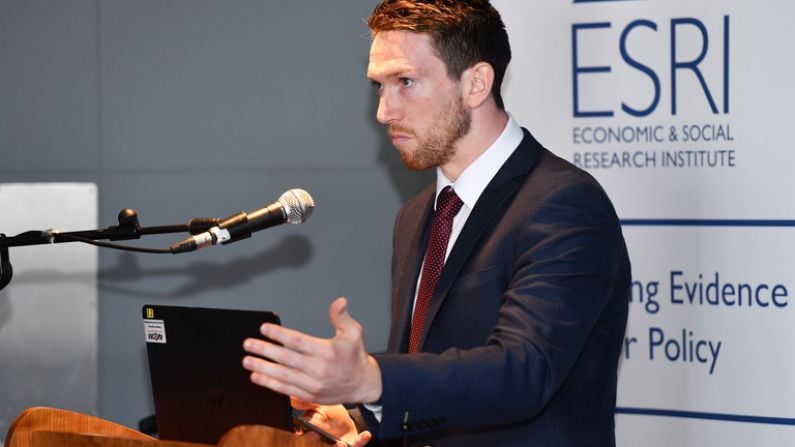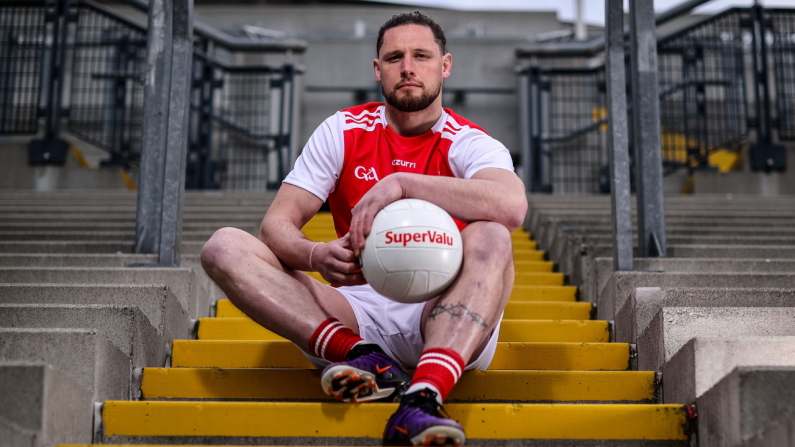With the glorious exception of John Costello's Annual Report for the Dublin County Board, studies and reports in the GAA are generally bland, dowdy things.
That's before you start chucking acronyms before the report so, on the face of it, an ESRI report commisioned by the GAA and the GPA is the kind of offering to make this year's football championship look like mad, freewheeling and wanton entertainment.
To give the report its full title: Playing Senior Inter-County Gaelic Games: Experiences, Realities, and Consequences. It is, however, an important study as it finally gives us an accurate picture of what a modern-day, elite Gaelic footballer and hurler actually looks like.
The demands on players and the attendant havoc wrought on club fixtures and the drift between the elite slice of the game and the rest are the most-talked about issues in the GAA right now, but these conversations often rely on incomplete facts, anecdote, and opinion.
With this report, we have established some of the basic facts about the lives of inter-county players. So, here are a few of the key learnings from the report that are worth bearing in mind in future arguments.
We now understand the levels of commitment
Players spend up to 31 hours a week training for their inter-county careers. On days of field-based sessions, players dedicate an average of 6.1 hours per day to training, which includes the session itself, video sessions, travel, and gear/food preparation.
For conditioning/gym sessions, this drops to 4.6 hours on a match week and 5 hours on non-match weeks.
The report says that teams have an average of 3.9 pitch sessions per match week, and 4.9 per non-match week.
On top of that, 72% of players said they did their own work on a match week, which came to an average of 1.5 sessions per week. 83% of players did their own work on a non-match week, and the average number of sessions per week is 1.9. (The match week figures don't include the actual match itself, as home advantage in games would skew the figure).
Playing with another team (eg club) adds another four hours a week (not including travel).
The figures show Dublin have a major advantage
Dublin have an advantage in that the majority of their players are based at home.
Players who are residents within their own county spend on average 5.8 hours a day preparing and executing a field-based session, compared to 6.7 hours for those who are not residents within their own county.
Given almost all of their players are based in Dublin, the All-Ireland champions have been benefitting greatly from this reality of geography.
(For more details on the number of players commuting to training from Dublin, have a read of this very fine Irish Times analysis by Eamon Donoghue and Malachy Clerkin).
While the demands are high, players don't entirely hate it
96% of all respondents said that their inter-county careers took up a large amount of time, with more than half of those surveyed saying that the commitments involved were too much.
That all being said, the vast majority of players said that they were happy they made the decision to play, with fewer than 5% of players saying they quit at the end of the 2016 season as they were not enjoying the game. The majority of players in 2016 were happy that they played at inter-county level, and said that it gave them skills to work under pressure, enhanced their leadership attributes and helped them to build a network of contacts that helped in their professional career.
Inter-county GAA is no country for old men
The author of the report, Elish Kelly, admitted that the sports are becoming "a young man's game". The lack of downtime with family and friends is a huge issue for older players, with 91% of players over the age of 30 citing this as a problem, compared to 71% of 18-21-year-olds.
Per the report, the older the player, the less he sleeps. Of players of all ages, 43% get between seven and eight hours of sleep. For players aged 30-plus, that figure drops to 37%. None of the latter group are getting the eight to 10 hours kip recommended for an athlete, and are therefore slightly re susceptible to injury.
On top of all of this, those aged-30 plus are spending an average of 8.9 hours at their professional job, compared to 7.9 hours for 18-30 year olds.
Of the players who quit football and hurling in 2016, 47.6% did so to focus on their career, with the next most frequent reason cited being injury (24.1%).
When you take all of that into account, it is clear that the level of commitment necessary to compete at intercounty level is shortening careers.
Controlling the demands asked of players is crucial to the GAA's future
The GAA's past attempts to curb winter training and other such examples have failed hopelessly, but with the weight of this research now behind them, future attempts may be more successful. As to how to do it?
GAA President John Horan spoke on a similar theme, and even floated the possibility that the GAA hire a "David Nucifora-type", in reference to the IRFU's performance director in order to manage centrally what level of commitment is best for players.
Horan also spoke of the alternative of delegating this responsibility to each county board, and he also pointed out the responsibility borne by intercounty managers. "Managers are key to this, and there is a lot in the report for managers to digest".
Regardless of how it happens, it has to happen.
Farcically, 40% of players didn't get a single week off from the sport in 2016, and the average break for those who did came to 5.1 weeks.
Burnout is a major worry for 18-21 year olds: a quarter of that age group play on five different teams, and 16.9% of them are playing with six or more teams. The report states that the Higher Education competitions, as currently constituted, are unfeasible if players are also playing at multiple age grades with their clubs and counties at that time of year.
Another of the report's recommendations is more defined negotiation between club and county manager regarding a player's workload: while two-thirds of players are happy with how their club management team responded when intercounty commitments made them unavailable for a club game, the report says that these arrangements are ad-hoc.
Regardless of how the issue is approached in the years to come, it is critical that everyone is aware of the responsibilities they have to players when demanding commitment.
Concurrent club and inter-county championships are becoming impossible
It is important to state from the outset that players are unwilling to turn their backs on their clubs. More than 90% of the players who responded said that their club played a major role in their development as a player.
There is one nugget of information, however, that shows players' priorities shift during the inter-county club championships.
Players responded to this survey in May and June of last year, meaning they were filling out the forms amid the cut and thrust of championship action. When asked to name other areas of life players would like to spend more time on, fewer than 3% responded by saying they wanted to spend more time with their club.
The GPA's Seamus Hickey told Balls at the launch that this data may be affected seasonally, and that figure might be a lot higher if players were responding in the middle of club championships.
But given we now know that championship focuses players' minds on the inter-county game, and that the increased workload of club/county commitments may ultimately have to be more formally balanced, is the natural end here a complete and formal separation of both championships?
We need to demand less of our players
So far we've spoken about the responsibilities borne by the players, clubs, managers, and GAA to serve the players. The rest of us have a job to do, too.
The report found that, in general, the players' levels of life satisfaction is in line with the general population, and their mental well-being is above the threshold for being at risk of depression.
However, these levels are below the general population's, especially for those at a similar age. The ESRI reckon that the loss of sleep may be a factor in this: only 26% of players woke up feeling refreshed and well rested most to all of the time, and that figure is 22% in the case of footballers only.
So while coaches and managers have a responsibility to the players, the rest of us do as well.
87% of players consciously mind their behaviour in football, and many drew attention to an expectation that they act as a role model 24/7, and cited feeling pressure as a result of being in the media and in the public eye.













